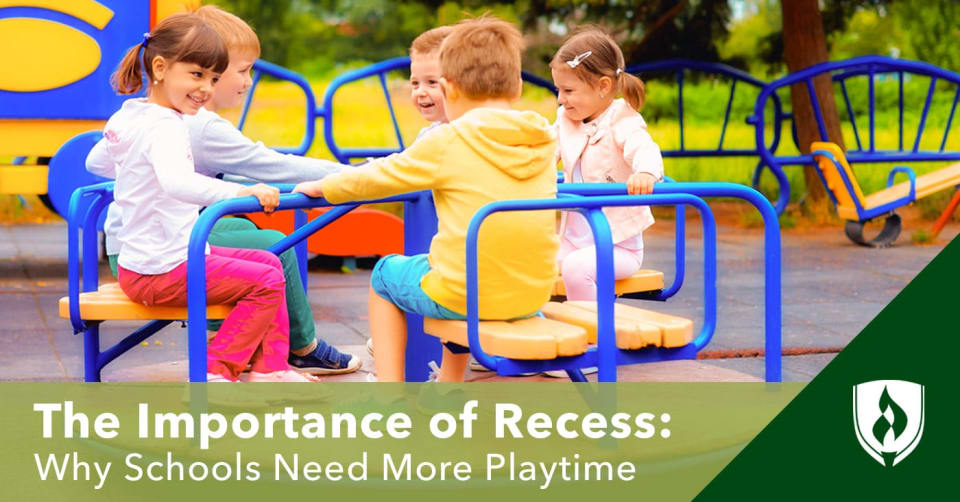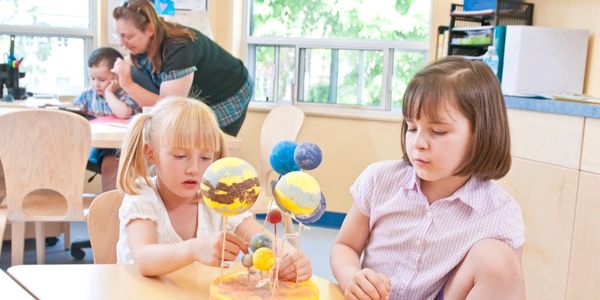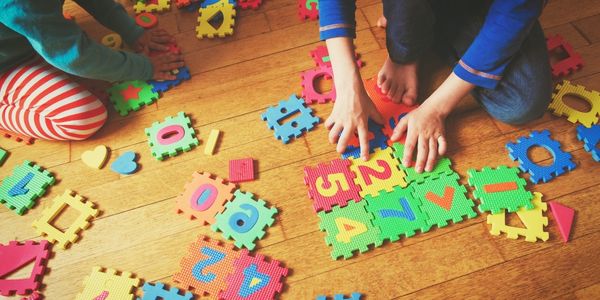
Your kids run and jump alongside you as you walk them home from the bus stop after another successful day of school. “What was your favorite part of the day today?” you ask. Both the kids shout, “Recess!”
You’re hardly surprised at their answer. You remember recess fondly from your own elementary school days. Jumping rope, swinging from the monkey bars, playing kickball and simply enjoying the outdoors was the highlight of your school day, too. But many children today aren’t given the opportunity to explore the full joys of recess.
School districts across the United States are cutting recess to make more time for structured classroom learning. On the surface, this may seem like a good idea. What’s wrong with giving kids more time to learn? But cutting recess and playtime may actually do more harm than good. Worse yet, only eight states currently require recess, which has some parents and educators worried that recess could disappear completely.
Don’t underestimate the importance of recess in your classroom. Read on to find out why play is vital to learning and what you can do to keep recess and playtime a part of your early childhood program.
The decline of recess
Recess time has been in decline for many children—in fact, one 2007 George Washington University study found that 20 percent of schools have reduced recess time.1 So why would school districts across the country begin taking away recess time? The likely driving force behind these cuts to children’s unstructured playtime is rooted in U.S. educational policy.
America’s education policy
The rapid decrease in recess began the same year the No Child Left Behind Act (NCLB) was passed. The law aimed to make America’s education system more internationally competitive by introducing achievement goals for schools, gauged by standardized tests in reading and math. If schools missed their achievement goals, they could be subject to a series of penalties, including loss of funding.
Fast-forward to 2011 when states began reviewing and adopting the Common Core State Standards. The goal was to standardize student achievement in math, literacy and language arts—and it bases student achievement on a series of mandatory tests. Much like the NCLB, Common Core relies on standardized test scores to gauge student performance—and those scores can influence school funding.
Teaching to the test
Between NCLBA and Common Core, it’s no surprise that teachers have felt the pressure to make sure students perform well on standardized tests. When educators are facing pay cuts, loss of funding to their school and perhaps even the loss of their jobs, it’s no wonder they started questioning if recess was a waste of time.
This pressure to cram even more learning into the school day is especially felt by underperforming, low-income schools that are already strapped for funding. The students in these schools are often so far below grade-level standards that the achievement bar set by Common Core feels unattainably high, and the gap between high-performing and underperforming schools hasn’t shrunk. While clearly nationwide educational standards are a well-intentioned idea, the implementation of these policies has left a lot to be desired—and the loss of recess time in favor of study time has become an unintended consequence.
The hidden benefits of recess
It may seem counterintuitive to send kids out to play when they’re falling below state standards, but recess advocates argue that getting outside for unstructured play may be more beneficial than keeping kids in the classroom all day.
“When schools choose to cut recess, they should consider the benefits they are cutting also and evaluate if the reasons for cutting recess outweigh these benefits,” says Marie Conti, head of The Wetherill School and member of the American Montessori Society board of directors. These are just some of the benefits that highlight the importance of recess.
Physical activity may improve brain function
“Freedom to move, run and play, especially outdoors, has a tremendous impact on children’s abilities to focus and control themselves throughout the day,” Conti says. Maria Montessori, a pioneer of early childhood education, believed that “the mind cannot be educated without using the body,” Conti adds. “She viewed learning as an integration of thinking and moving.”
This isn’t just the belief of an influential educator—research has shown positive links between people who exercise regularly and their cognitive ability. Even if no such research existed, common sense makes a compelling case—would you feel mentally fresh sitting for hours learning a subject?
Recess promotes social skills
“Recess time gives more opportunity for socialization, teamwork and practice with conflict-resolution skills,” Conti says. Asking other kids to play, explaining the rules of a complex game and hashing out disputes are all important life lessons that kids can only learn if they’re given time to play.
Recess also offers the chance for children to strengthen their leadership and negotiation skills, and it can prevent bullying. Kids love playing—and when a conflict arises, it pushes children to practice these vital social skills so they can get back to having fun.
Recess fights childhood obesity
About one in five school-aged children has excess body fat, according to the Centers for Disease Control (CDC).2 The CDC also recommends that children get at least 60 minutes of physical activity each day, but that’s tough to achieve if kids are sitting in a classroom for six to seven hours with no break for movement.
A healthy and active lifestyle is a routine that needs practice and reinforcement to make into a lifelong habit. Recess offers kids the chance to move their bodies and get closer to their 60 minutes of physical activity, thus making it less likely that they’ll struggle with obesity.
Recess reduces stress
“Outdoor recess also gives the benefit of experiencing fresh air and sunshine, both noted for increasing overall health and mood,” Conti says. Sunlight is also a key source of vitamin D, which increases learning and productivity.
The physical activity kids take part in during recess can also reduce stress levels and allow children to feel more relaxed. In an education system that continues to place higher expectations on children to perform to a certain standard, less stress is just what the doctor ordered.
How to stand up for recess
Recess doesn’t have to go extinct. You can keep the importance of play front and center in your classroom by taking small steps to encourage recess in your school or early childhood program.
If your program doesn’t allow for a longer midday recess, Conti recommends taking smaller breaks throughout the day or teaching a lesson outside so kids can still reap the benefits of the great outdoors. You can also designate an indoor space for recess so that kids don’t have to give up their free play due to bad weather.
Make the grade
Now that you understand the importance of play, you’re prepared to defend recess and create a strong learning environment for the children in your classroom.
Recess isn’t the only way to encourage learning through taking breaks. Find out how techniques like spaced learning can positively impact your ECE classroom in our article, “What Is Spaced Learning? Reaping the Rewards of Repetition in the ECE Classroom.”
Also check out educational apps for kids.
1George Washington University, Center on Education Policy, NCLB Year 5: Choices, Changes, and Challenges: Curriculum and Instruction in the NCLB Era, [Information accessed May 21, 2018] https://www.cep-dc.org/displayDocument.cfm?DocumentID=312
2Division of Population Health, National Center for Chronic Disease Prevention and Health Promotion




